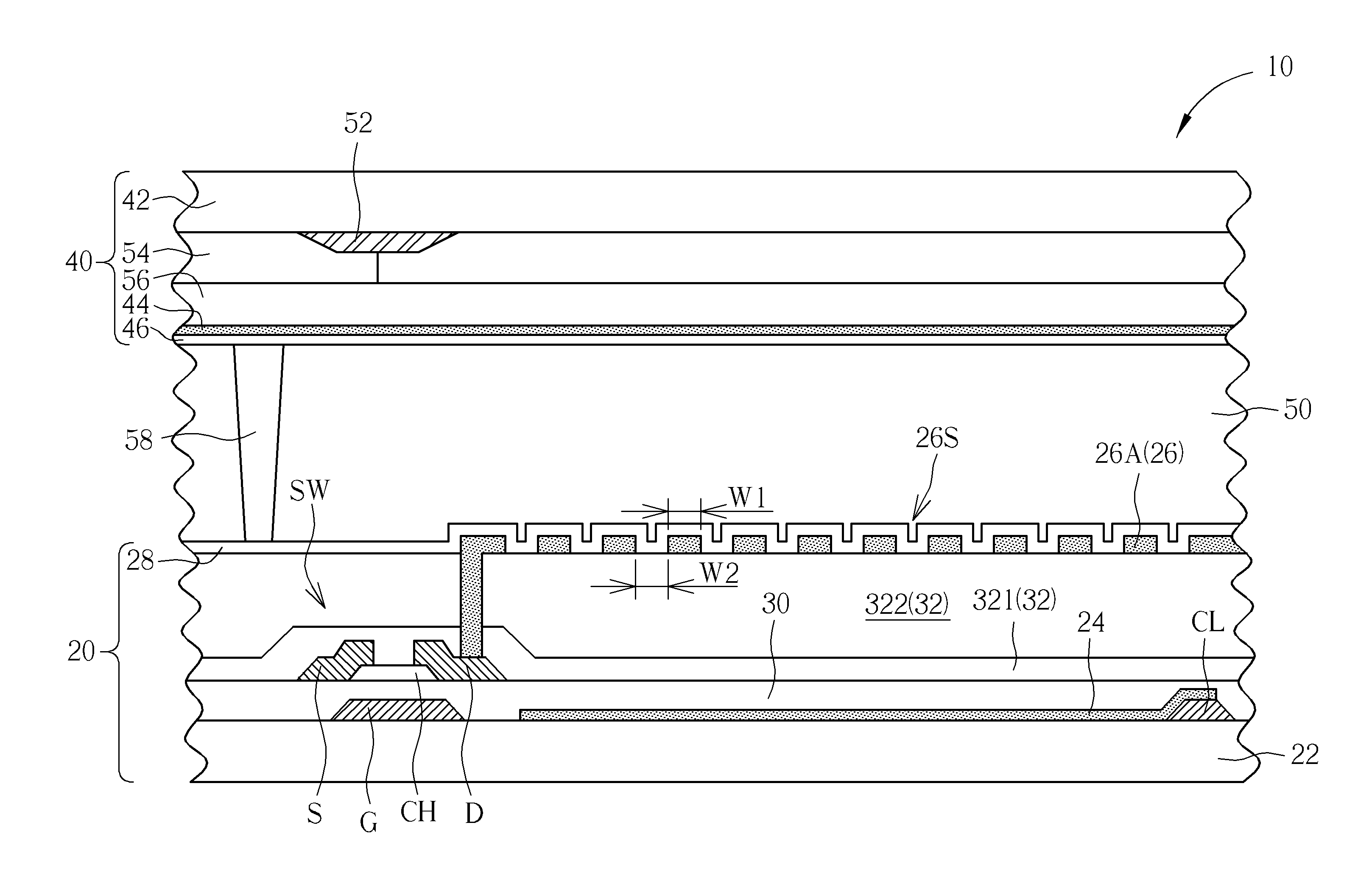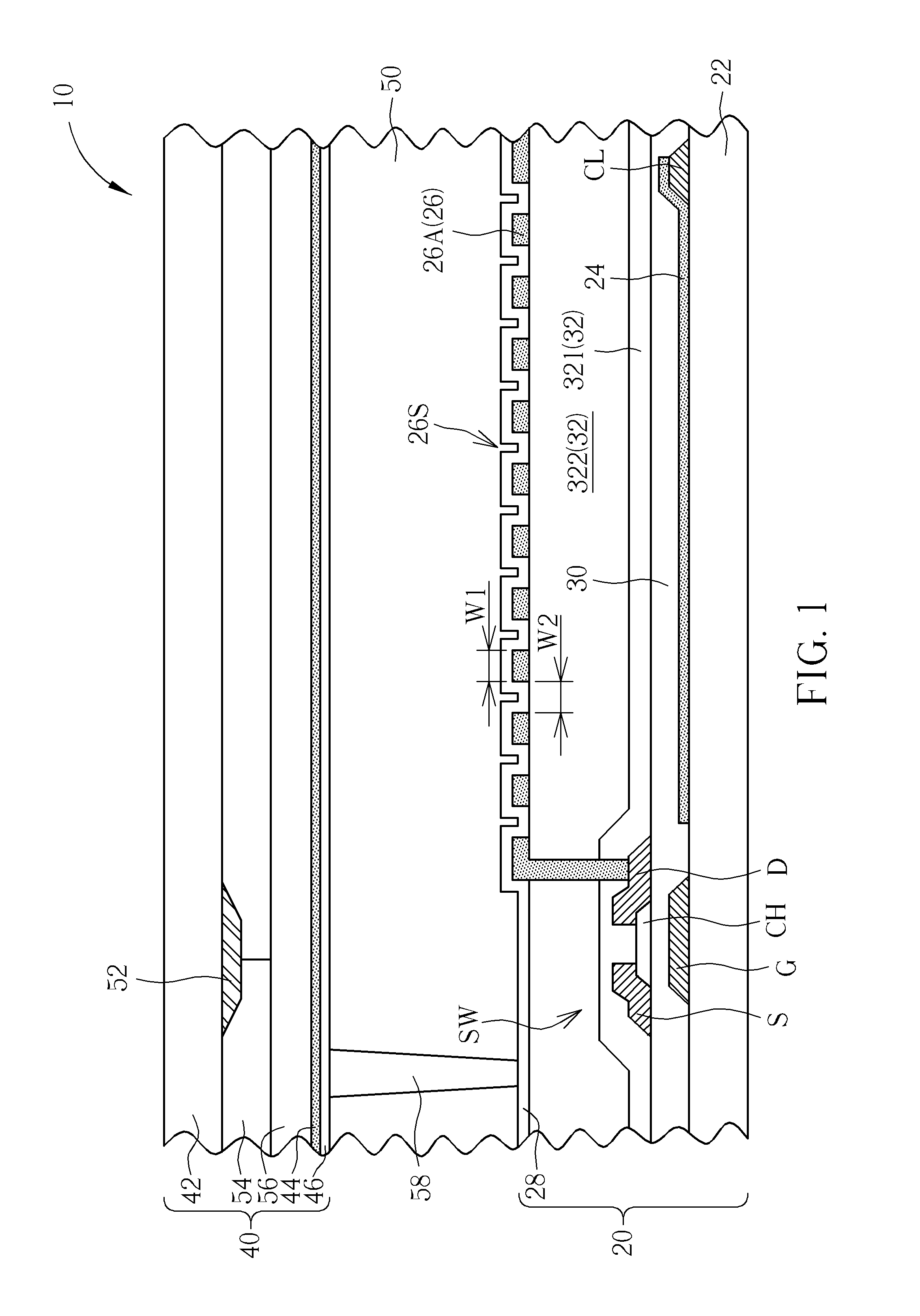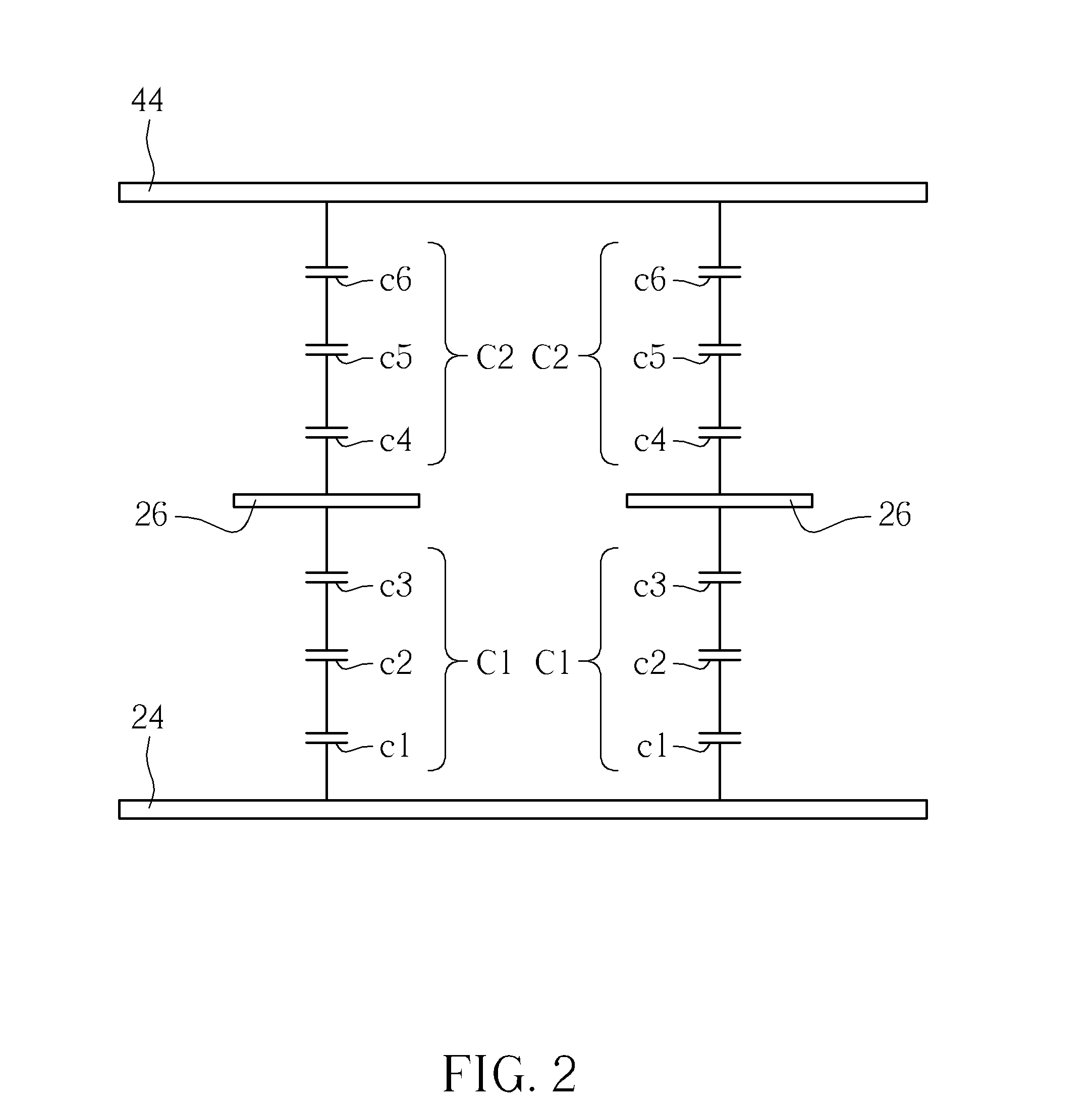Display panel
a display panel and panel technology, applied in the field of display panels, can solve the problems of low light transmittance, image retention, light leakage, etc., and achieve the effect of effectively shielding light leakag
- Summary
- Abstract
- Description
- Claims
- Application Information
AI Technical Summary
Benefits of technology
Problems solved by technology
Method used
Image
Examples
first embodiment
[0032]Refer to FIG. 1. FIG. 1 is a schematic diagram illustrating a display panel according to the present disclosure. The display panel of this embodiment includes a plurality of pixels, and each pixel includes a plurality of sub-pixels. To highlight the features of the display panel of the present disclosure, only one single sub-pixel is exemplarily drawn in FIG. 1. In addition, an FFS display panel is selected as an example of the display panel in this embodiment, but not limited. As shown in FIG. 1, the display panel 10 of this embodiment includes a first substrate structure 20, a second substrate structure 40 and a non-self-luminous display medium layer 50. The first substrate structure 20 includes a first substrate 22, a first common electrode 24, a pixel electrode 26 and a first alignment film 28. The first common electrode 24 is disposed on the first substrate 22. The pixel electrode 26 is disposed on the first common electrode 24, the pixel electrode 26 and the first common...
second embodiment
[0043]Refer to Table 1. Table 1 lists an optimal configuration of the dielectric constant and the thickness of the first passivation layer 321, the second passivation layer 322, the first alignment film 28, the non-self-luminous display medium layer 50 and the second alignment film 46 of the display panel 10′ in the
TABLE 1dielectricthicknessunit capacitanceconstant(Angstrom)(farad / μm2)first passivation5.420002.391*10−16layersecond3.2300009.444*10−18passivation layerfirst alignment38003.320*10−16filmnon-self-luminous3.5320009.6840*10−18 display mediumlayersecond alignment38003.320*10−16film
[0044]Refer to FIG. 5, as well as Table 1. FIG. 5 illustrates a relation between the second capacitance / the first capacitance and the thickness of the second passivation layer, where the ratio of the second capacitance to the first capacitance is unit free, and the unit of thickness of the second passivation layer is angstrom. As shown in FIG. 5, when the dielectric constant and the thickness of th...
fourth embodiment
[0057]Refer to FIG. 13. FIG. 13 is a schematic diagram illustrating a display panel according to the present disclosure. As shown in FIG. 13, in the display panel 80 of this embodiment, the branch electrodes 68A of the pixel electrode 68 are arranged along the second direction D2, instead of along the first direction D1. The branch electrodes 68A and the data line DL may have at least one turning part. In this embodiment, the shape of the common line CL may be modified as disclosed in the alternative embodiments of FIGS. 10A-10E, and the relation between the width of the light-shielding layer 722 and the width of the transparent electrode layer 721 of the light-blocking stacking layer 72 may be modified as disclosed in the embodiments of FIGS. 9, 11 and 12. Furthermore, transparent electrode layer 721 does not exist on (or namely is not disposed on) the effective light-transmitting region in FIGS. 9 to 13, for example.
[0058]Refer to FIG. 14 and FIG. 15. FIG. 14 is a simulation diagr...
PUM
 Login to View More
Login to View More Abstract
Description
Claims
Application Information
 Login to View More
Login to View More - R&D
- Intellectual Property
- Life Sciences
- Materials
- Tech Scout
- Unparalleled Data Quality
- Higher Quality Content
- 60% Fewer Hallucinations
Browse by: Latest US Patents, China's latest patents, Technical Efficacy Thesaurus, Application Domain, Technology Topic, Popular Technical Reports.
© 2025 PatSnap. All rights reserved.Legal|Privacy policy|Modern Slavery Act Transparency Statement|Sitemap|About US| Contact US: help@patsnap.com



